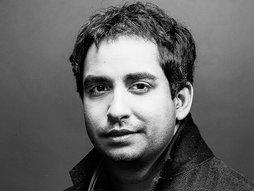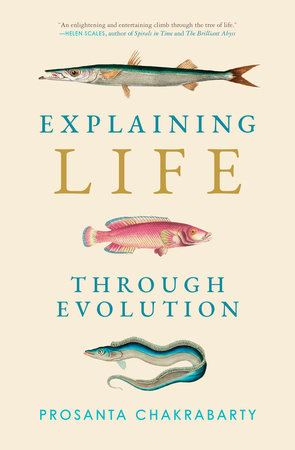 Explaining Life through Evolution tells the origin story of life on this planet and how we arrived at the tremendous diversity among organisms that we see around us today. In the excerpt below, Prosanta Chakrabarty emphasizes the importance of understanding evolution in everyday contemporary life.
Explaining Life through Evolution tells the origin story of life on this planet and how we arrived at the tremendous diversity among organisms that we see around us today. In the excerpt below, Prosanta Chakrabarty emphasizes the importance of understanding evolution in everyday contemporary life.
Our Genealogy and Ancestry
Why should you care about where you belong on the Tree of Life? Because not only does it tell you where you came from, but also who you are. As humans, we tend to focus on the differences between us, no matter how small those differences might be, but we are all more similar to one another than many of us are willing to believe. As more and more people take ancestry tests, sending their money and saliva to 23andMe and other genealogy testing centers, we need to be educated on what the results of those tests actually mean scientifically, and we all have to decide, together, what they mean socially. Many of us are coming to learn that science describes gender, race, sex, and sexuality as attributes on a spectrum, but for much of our modern lives we’ve forced these attributes into a few arbitrary, usually binary, categories—and nature loathes a binary. Why look at the rainbow that is humanity in just black and white? If instead you look at that rainbow carefully you would celebrate the fact that all of that colorful diversity comes from the same little drops of water, each with just a little different shine. We humans focus on our differences because we share so many similarities. To the cosmos, we are all still just “star stuff,” to quote Carl Sagan; all of us life forms are made up of the same chemical elements—hydrogen formed during the Big Bang and elements like oxygen, carbon, and nitrogen forged in the hearts of stars.[i] It’s what we do with our star stuff that makes us special.
The more you learn about evolution and about “where you are from,” the more you can see our similarities. An alien might be surprised how we focus on the small stuff instead of the star stuff. Twins can check off different boxes for race based on how they look and perhaps based on how other people see them. There are just a few genes that determine eye color and skin pigment—is that what determines your “race’? What does it mean when one sibling has dark skin and is treated as “Black” and the other fair skin and is treated as “white,” as sometimes happens with mixed-race children?[ii] I love the poem “Genetics” in Jacqueline Woodson’s book Brown Girl Dreaming,[iii] which talks about how strangers didn’t believe her “pale as dust” brother was actually related to her darker-skinned family until they all smiled, revealing the same gap between their two front teeth. Do DNA test results show your “race” or family history as easily as those shared gap-tooth smiles? Not always. You can have a Native American ancestor who doesn’t show up at all in your DNA test results but does in your sister’s results. You might be African American but have some significant proportion of Neanderthal DNA that is usually seen at that level only in people of European descent. There are hard truths in your DNA, but there are also mysteries—and even miracles. Your genome is Pandora’s Box, Aladdin’s Lamp, and Alice’s Looking Glass; understanding what your genome, can and can’t tell you is part of understanding your origins.
[i] K. Mack, The End of Everything: Astrophysics and the Ultimate Fate of the Cosmos (New York: Scribner, 2020); C. Prescod-Weinstein, The Disordered Cosmos: A Journey into Dark Matter, Spacetime, and Dreams Deferred (London: Hachette UK, 2021).
[ii] P. Edmonds, “These Twins Will Make You Rethink Race,” National Geographic, April 2018 https://www.nationalgeographic.com/magazine/2018/04/race-twins-black-white-biggs/.
[iii] J. Woodson, Brown Girl Dreaming (New York: Penguin Random House, 2016).
Prosanta Chakrabarty is Professor of Evolutionary Biology and Curator of Fishes at Louisiana State University. He is a TED Senior Fellow, an Elected Fellow of AAAS (American Association for the Advancement of Science), a Fulbright Distinguished Chair, and a National Geographic Certified Educator.






